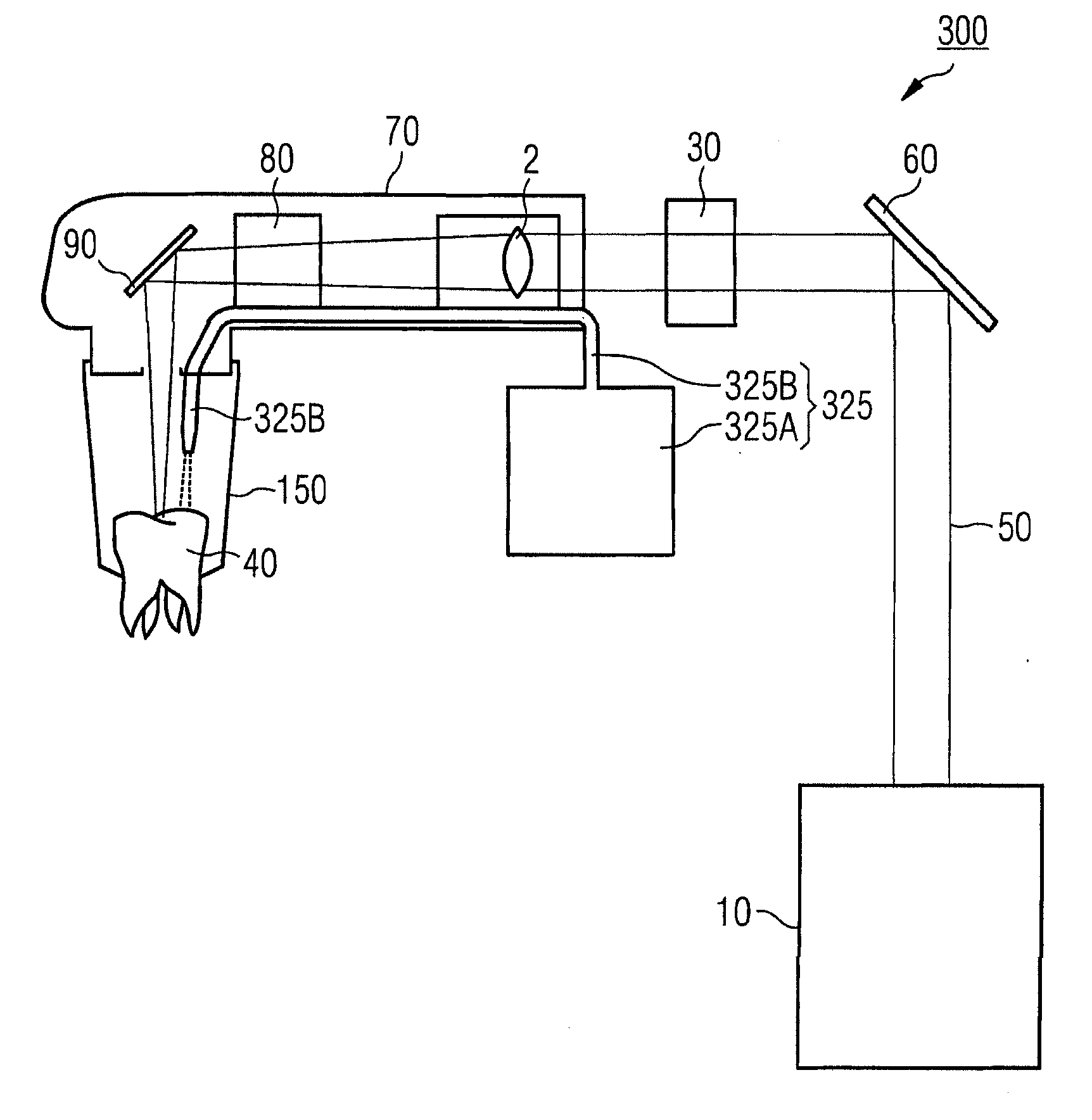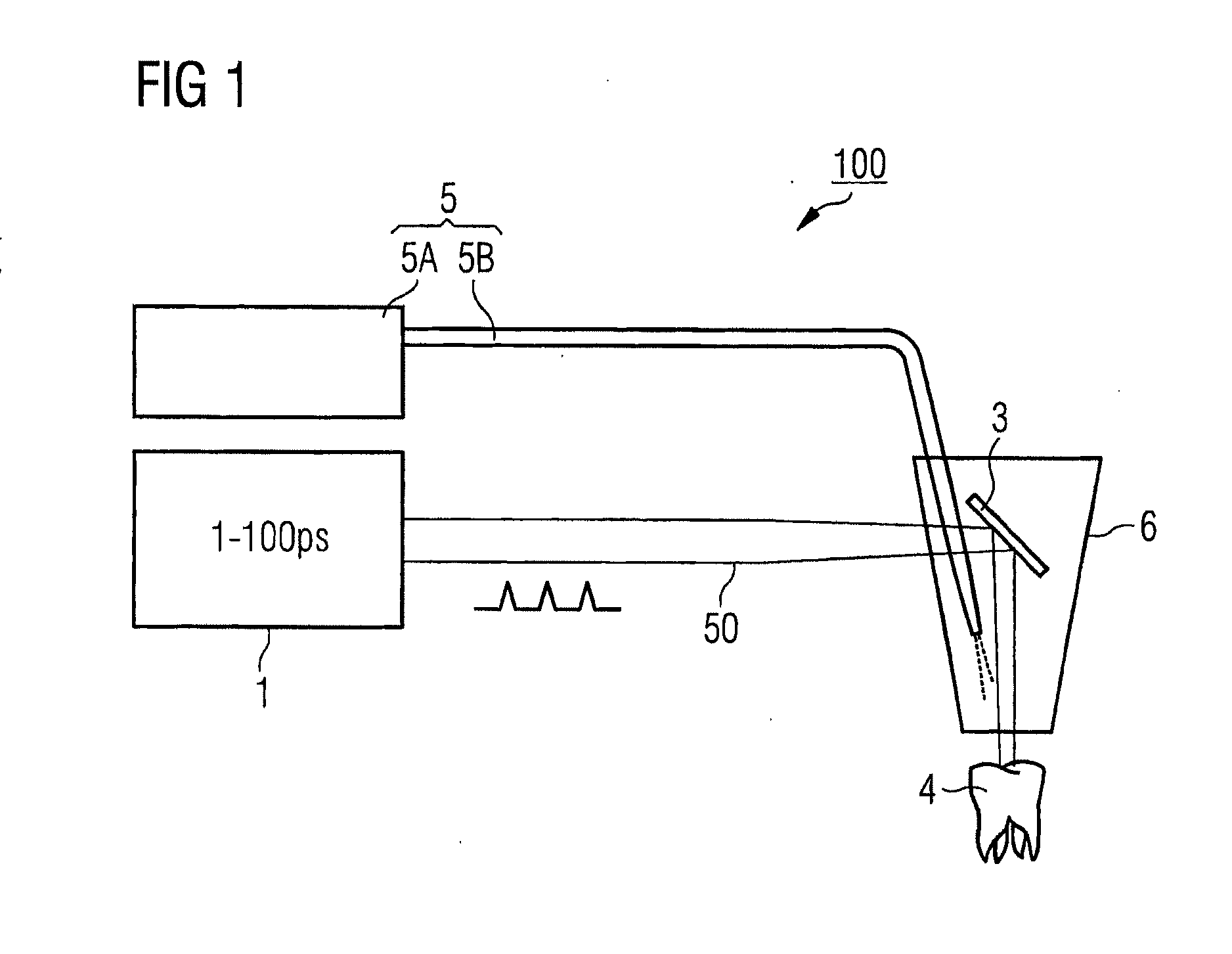Device and method for lasering biological tissue
a biological tissue and laser technology, applied in boring tools, dental tools, radiation therapy, etc., can solve the problems of no “smart” device for simultaneous and objective detection of pathological structures, unavoidable pain, and thermomechanical damage, so as to achieve maximum medical and biological compatibility, avoid undesirable collateral effects, and achieve more biological-medical compatibility
- Summary
- Abstract
- Description
- Claims
- Application Information
AI Technical Summary
Benefits of technology
Problems solved by technology
Method used
Image
Examples
Embodiment Construction
[0035]FIG. 1 illustrates one embodiment of a laser device for lasering biological tissue, but not to true scale. FIG. 1 shows a dental laser device for lasering, abrading or ablating dentin, particularly carious dentin. However, the laser device may be any other kind of medical laser device for lasering some other kind of biological tissue.
[0036]The laser device 100 comprises a laser beam source 1 that may emit a pulsed laser beam 50 with a laser pulse ranging from 1 to 100 ps. The laser beam may be focused on a patient's tooth 4. It may be necessary to first deflect the laser beam with an optical diverter 3 such as a mirror or deviation prism.
[0037]The laser beam source 1 may generate the laser pulses so that the energy per pulse does not exceed 100 pJ. In this case, the focuser 2 for maintaining the energy density values is set so that the laser beam is focused on the surface of the tooth 4 with a diameter range from 10 to 100 μm. The laser beam source 1 may emit the laser pulses ...
PUM
 Login to View More
Login to View More Abstract
Description
Claims
Application Information
 Login to View More
Login to View More - R&D
- Intellectual Property
- Life Sciences
- Materials
- Tech Scout
- Unparalleled Data Quality
- Higher Quality Content
- 60% Fewer Hallucinations
Browse by: Latest US Patents, China's latest patents, Technical Efficacy Thesaurus, Application Domain, Technology Topic, Popular Technical Reports.
© 2025 PatSnap. All rights reserved.Legal|Privacy policy|Modern Slavery Act Transparency Statement|Sitemap|About US| Contact US: help@patsnap.com



